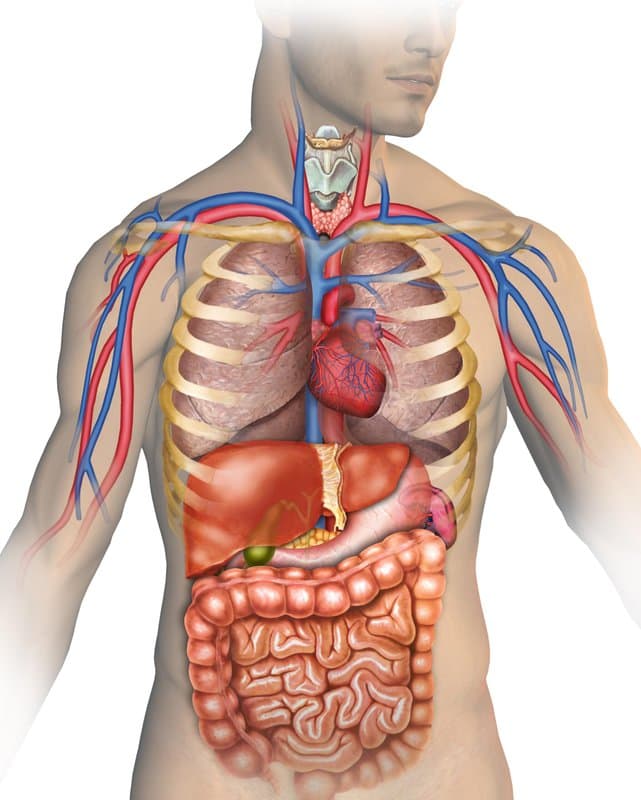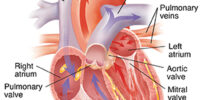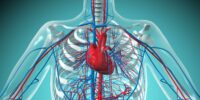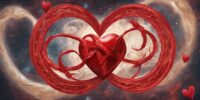What Is Human Anatomy? A Comprehensive Guide

Human anatomy is the study of the structure and organization of the human body. It is a complex and intricate field of study that requires a thorough understanding of the various systems and structures that make up the human body. Human anatomy is a fundamental part of medical education and is essential for healthcare professionals to diagnose and treat medical conditions accurately.
At its core, human anatomy is the study of the body’s organization at various levels, from its smallest building blocks, cells, to the complex systems that enable us to move, breathe, and think.
Through the study of human anatomy, we can understand how different parts of the body work together to maintain our health and well-being. This comprehensive guide will provide an overview of human anatomy, including the various systems and structures that make up the human body.
By the end of this guide, you will have a better understanding of the body’s organization and function, from the microscopic level to the macroscopic level.
Key Takeaways
- Human anatomy is the study of the structure and organization of the human body, and is fundamental in medical education.
- Cells are the fundamental units of life and play a critical role in the structure and function of all living organisms.
- Tissues are specialized groups of cells that work together to perform specific functions in the body, and there are four main types: epithelial, connective, muscle, and nervous.
- Understanding the respiratory and nervous systems can help promote lung health and prevent respiratory diseases.
Cells: The Building Blocks of Life
Cells, as the fundamental units of life, play a critical role in the structure and function of all living organisms. These microscopic structures are responsible for carrying out all the necessary processes that are essential for life.
Cells are made up of various components, including the cell membrane, cytoplasm, and nucleus, which work together to facilitate all the biochemical reactions that occur within the cell.
The cell membrane is a thin layer that encloses the cell, separating its internal environment from the external environment. It is composed of lipids, proteins, and carbohydrates, which provide the necessary structure and function for the cell to maintain its integrity.
The cytoplasm is the fluid that fills the cell, containing various organelles, such as mitochondria and ribosomes, which are responsible for various cellular functions.
The nucleus, located in the center of the cell, contains the genetic material, which is responsible for determining the cell’s characteristics and functions.
These various components work together to ensure that the cell can carry out its essential functions, such as metabolism, reproduction, and response to stimuli.
Tissues: The Fabric of Our Bodies
Tissues, the building blocks of all organs, are specialized groups of cells that work together to perform specific functions in the body. There are four main types of tissues in the human body: epithelial, connective, muscle, and nervous tissue.
Epithelial tissue covers the body’s surfaces, lines internal organs, and forms glands. It serves as a protective barrier, regulates the exchange of materials, and provides sensory information.
Connective tissue supports and connects organs and tissues in the body. It includes bone, cartilage, adipose tissue, blood, and lymphatic tissue.
Muscle tissue is responsible for movement and includes skeletal, cardiac, and smooth muscle.
Nervous tissue transmits messages between different parts of the body and coordinates the body’s response to changes in the environment.
Each type of tissue has unique characteristics and functions that contribute to the overall health and functionality of the body. For example, the epithelial tissue in the skin protects the body from pathogens, UV radiation, and dehydration. Muscle tissue in the heart contracts to pump blood throughout the body, while smooth muscle in the digestive tract contracts to move food through the digestive system.
Understanding the structure and function of tissues is essential for diagnosing and treating diseases and injuries, as well as for developing new therapies and medical technologies.
Organs: The Functional Units of the Body
Organs, composed of different types of tissues, work together to perform complex functions in the body. These functional units are the building blocks of the body, responsible for carrying out specific tasks in order to maintain homeostasis. There are numerous organs in the human body, each with their own unique structure and function, but they all work in unison to ensure the proper functioning of the body.
One example of an organ system is the digestive system, which is responsible for breaking down food and absorbing nutrients. This system is made up of various organs such as the mouth, esophagus, stomach, small intestine, and large intestine.
The mouth and teeth are responsible for mechanically breaking down food, while the stomach secretes digestive enzymes and acids to further break down food. The small intestine is responsible for nutrient absorption, while the large intestine absorbs water and electrolytes before eliminating waste.
Organs such as these work together to ensure that the body receives the necessary nutrients to maintain overall health and well-being.
The Skeletal System: Support and Protection
The skeletal system, consisting of bones, cartilage, and ligaments, serves as a crucial framework for the human body, providing support and protection to vital organs and tissues.
The human skeleton comprises 206 bones, which are classified into four categories: long, short, flat, and irregular. The long bones, such as the femur, tibia, and fibula, are primarily responsible for providing support and facilitating movement. The short bones, such as those in the hands and feet, provide stability and support. The flat bones, such as the skull and sternum, protect vital organs such as the brain and heart. The irregular bones, such as those in the spine, serve multiple functions, including protection, support, and movement.
The skeletal system is not only a structural component of the body but also plays a crucial role in maintaining homeostasis. The bones serve as a reservoir for minerals such as calcium and phosphorus, which play a vital role in nerve and muscle function, blood clotting, and bone density.
Additionally, the bone marrow is responsible for the production of red and white blood cells, which are necessary for oxygen transportation and immunity. The joints, which are formed by the articulation of bones and cartilage, facilitate movement and provide flexibility to the body.
Overall, the skeletal system is a complex and dynamic system that plays a critical role in the functioning and survival of the human body.
The Muscular System: Movement and Strength
Muscles are essential for movement and provide strength to the human body. The muscular system is made up of three types of muscles: skeletal, smooth, and cardiac.
Skeletal muscles are attached to bones and work together with the bones to produce movement. Smooth muscles are found in organs such as the stomach and intestines, and they help to move substances through the body. Cardiac muscles are found in the heart and are responsible for pumping blood throughout the body.
The muscular system plays a crucial role in our daily lives, allowing us to complete tasks such as walking, running, and lifting objects.
Here are five interesting facts about the muscular system:
- The human body has over 600 muscles.
- The smallest muscle in the human body is the stapedius muscle in the ear, which measures only 2.5 millimeters.
- The strongest muscle in the human body is the masseter muscle in the jaw, which can exert a force of over 200 pounds.
- Muscles make up about 40% of the body’s weight.
- Muscles require a constant supply of oxygen and nutrients in order to function properly.
The Cardiovascular System: The Heart and Blood Vessels
Moving on from the previous subtopic, where we have discussed the importance of the muscular system in movement and strength, we will now delve into the cardiovascular system.
This system is composed of the heart and blood vessels, and it plays a crucial role in maintaining the overall health and function of the body.
The heart is a muscular organ that pumps blood throughout the body, delivering essential nutrients and oxygen to the cells and removing waste products. It is located in the chest cavity, between the lungs, and is divided into four chambers.
The upper two chambers are called the atria, while the lower two are called the ventricles. The heart’s rhythmic contractions are controlled by a specialized group of cells called the sinoatrial node, also known as the pacemaker of the heart.
The blood vessels, on the other hand, are the network of tubes that transport blood throughout the body. There are three types of blood vessels: arteries, veins, and capillaries. Arteries carry oxygenated blood away from the heart, while veins carry deoxygenated blood back to the heart. Capillaries are the smallest blood vessels and are responsible for exchanging nutrients and waste products between the blood and tissues.
Understanding the anatomy and function of the cardiovascular system is essential in maintaining a healthy body, and any dysfunction or disease in this system can have severe consequences.
The Respiratory System: Breathing and Oxygen Exchange
Understanding the intricate workings of the respiratory system is crucial in maintaining optimal health and well-being, as it is responsible for the exchange of oxygen and carbon dioxide in the body. The respiratory system is made up of several organs, including the lungs, diaphragm, trachea, bronchi, and alveoli.
Oxygen is taken in through the lungs, where it is transported to the bloodstream and distributed throughout the body. Carbon dioxide, a waste product, is then removed from the body through exhalation.
Breathing is a complex process that involves the contraction and relaxation of muscles in the chest and diaphragm. When we inhale, the diaphragm contracts and moves downward, while the muscles in the chest expand, creating a vacuum that allows air to be drawn into the lungs. When we exhale, the diaphragm and chest muscles relax, pushing air out of the lungs.
Oxygen exchange occurs in the alveoli, which are tiny air sacs in the lungs. Here, oxygen is transferred into the bloodstream, while carbon dioxide is removed and expelled from the body.
Understanding the intricacies of the respiratory system can help individuals make better lifestyle choices that promote lung health and prevent respiratory diseases.
The Nervous System: Control and Coordination
The nervous system is a highly complex network of cells and tissues that is responsible for controlling and coordinating the body’s functions and responses to internal and external stimuli. It is composed of two main parts: the central nervous system (CNS) and the peripheral nervous system (PNS).
The CNS is made up of the brain and spinal cord, while the PNS includes all the nerves that connect the CNS to the rest of the body. The nervous system plays a vital role in maintaining homeostasis in the body. It receives information from sensory receptors about changes in the internal and external environments, processes this information, and then initiates an appropriate response.
The following subtopics provide a glimpse into the fascinating world of the nervous system:
- The structure of neurons: Neurons are the building blocks of the nervous system. They have a unique structure that enables them to transmit information throughout the body. The three main parts of a neuron are the cell body, dendrites, and axon.
- The role of neurotransmitters: Neurotransmitters are chemicals that allow neurons to communicate with each other. They are essential for transmitting signals across synapses, the junctions between neurons. Some common neurotransmitters include dopamine, serotonin, and acetylcholine.
Conclusion
In conclusion, human anatomy is a complex and fascinating subject that involves the study of the structure and function of the human body. It is essential for healthcare professionals to have a thorough understanding of human anatomy as it provides a foundation for effective diagnosis, treatment, and patient care.
By understanding the various levels of organization within the body, such as cells, tissues, and organs, healthcare professionals can gain insight into the intricate workings of the human body.
The skeletal, muscular, cardiovascular, respiratory, and nervous systems are some of the key systems that make up the human body. Each system plays a crucial role in maintaining the body’s overall function and wellbeing.
A thorough understanding of human anatomy is essential for healthcare professionals as they work to diagnose and treat a wide range of medical conditions.
By continuing to study and explore the complexities of the human body, we can gain a greater appreciation for the amazing capabilities of the human form.









